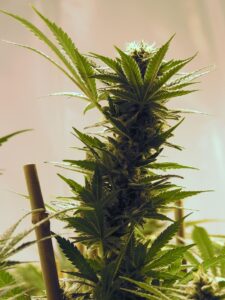 Preparing for a state hemp test involves several key steps to ensure that your hemp crop meets the required THC content limits and complies with regulations. Here’s a comprehensive guide on how to prepare for a state hemp test:
Preparing for a state hemp test involves several key steps to ensure that your hemp crop meets the required THC content limits and complies with regulations. Here’s a comprehensive guide on how to prepare for a state hemp test:
1. Understand State Regulations: Familiarize yourself with the hemp regulations specific to your state, as they can vary. Regulations cover aspects such as THC limits, sampling procedures, testing methods, and reporting requirements. Stay updated on any changes to these regulations to avoid any surprises during testing.
2. Plan Sampling Strategy: Develop a well-thought-out sampling strategy that ensures your collected samples are representative of your entire hemp crop. Different parts of the plant may have varying THC levels, so plan how you’ll collect samples from different sections of your plants.
3. Select the Right Laboratory: Choose an accredited and reputable testing laboratory that specializes in hemp THC testing. Look for labs that have experience with hemp testing, proper equipment (such as SJ Labs), and a history of accurate results.
4. Timing Is Key: Time your sampling appropriately. If THC levels tend to rise as the plants mature, you might want to consider sampling and testing closer to harvest. Make sure to adhere to any specific guidelines on when to collect samples.
5. Collect Representative Samples: Follow your sampling strategy meticulously to ensure that the samples you collect accurately represent your entire hemp crop. Avoid taking samples from outlier plants or areas that might not be representative.
6. Sample Handling and Transportation: Handle the samples carefully to prevent contamination and degradation. Properly label and package each sample to prevent cross-contamination. If required, use appropriate preservation methods to maintain THC stability during transportation.
7. Prepare Required Documentation: Gather all the necessary paperwork and documentation required for the testing process. This may include identification of the samples, the sampling plan, and any relevant permits or licenses.
8. Communicate with the Laboratory: Coordinate with the chosen laboratory to understand their requirements and procedures. This includes how they want the samples to be packaged, shipped, and delivered. Clear communication can prevent errors and delays.
9. Await Results: Once the laboratory receives the samples, they will perform the THC testing. Depending on the laboratory’s workload and the complexity of the tests, it may take some time to receive the results. Be patient and plan accordingly.
10. Act on Results: If your hemp samples pass the THC testing and comply with regulations, you’re good to go. If the THC levels are higher than the legal limit, you may need to take appropriate measures, which could include adjusting harvest timing, modifying cultivation practices, or, if necessary, destroying the non-compliant plants.
11. Continuous Learning: Hemp regulations and testing methodologies can evolve. Stay informed about any changes or advancements in the industry to adapt your practices accordingly.
Conclusion: Preparing for a state hemp test involves careful planning, adherence to regulations, and collaboration with reputable testing labs. By following these steps, you increase the likelihood of your hemp crop passing the THC testing and maintaining compliance with state regulations. Remember that accurate testing benefits both your business and the integrity of the hemp industry as a whole.


Recent Comments